Birds aren’t just bound to the land and sky; some species are arguably more at home in the water. Countless species of avians call creeks, rivers, lakes, ponds, and the sea their home. I think doing an exhaustive list of all these fascinating birds would have been overwhelming, so let’s stick to five families of birds that swim underwater.
Our five phylogenetic families are Grebes (Podicipedidae), Mergansers (Anatidae), Cormorants (Phalacrocoracidae), Puffins (Alcidae), and Penguins (Spheniscidae). Each of these groups sheds an exciting view on the adaptation of birds to an aquatic lifestyle.
So, without further adieu, let’s dive in!
Grebes (Podicipedidae)
Grebes might be an odd place to start. However, they have one of the most underappreciated adaptations for piscivorous (fish-eating) birds.
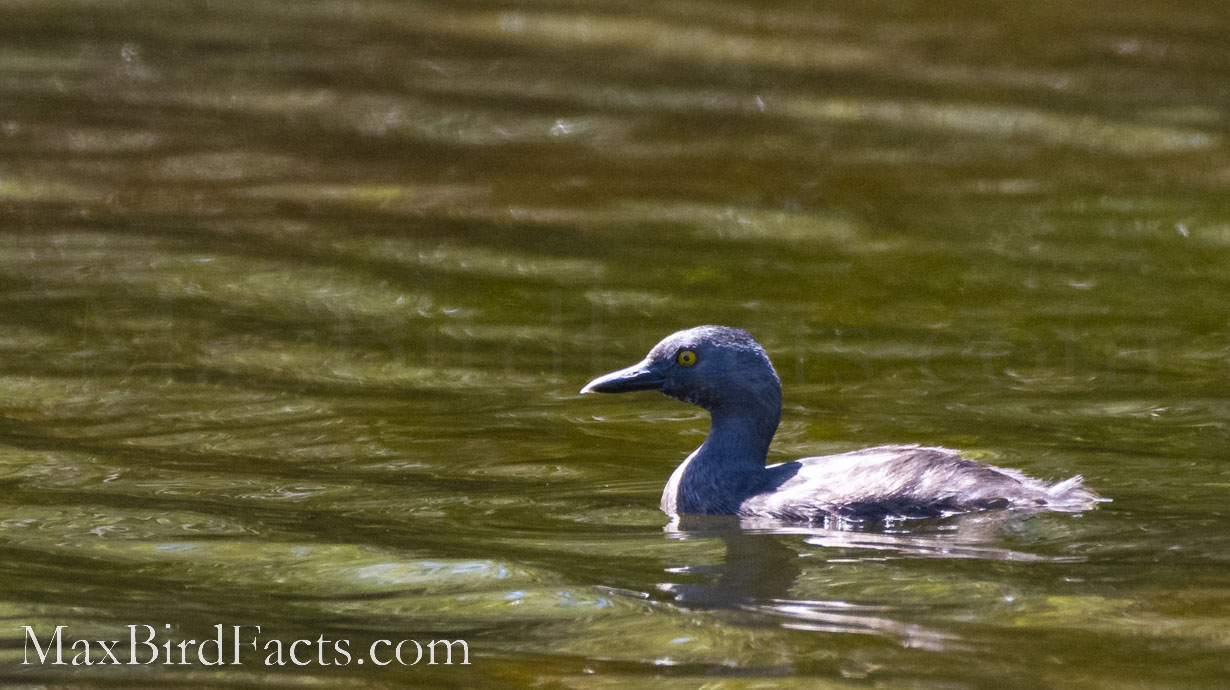
Unlike most other aquatic avians, whose feet are palmated (webbed), Grebes have lobated (lobbed) feet. This adaptation might seem trivial on paper, but its functionality is remarkable.
When a webbed-footed bird, say a duck, is paddling through the water, it has to close its toes together to reduce the drag of the webbed feet. If the duck doesn’t fold its toes together, the webbing will catch the water in the opposite direction the bird intends to travel, nullifying its movement.
Compare this to a lobbed-foot, where fleshy extensions grow from each toe individually. These lobes fold flat when the bird pushes its foot forward through the water, removing the need to close or tuck its toes. Moreover, because each lobe is attached to the individual toe and not forming a solid web, the bird has better balance on land. This means the bird retains the advantages of separate digits for terrestrial movement while also having exceptional aquatic mobility.
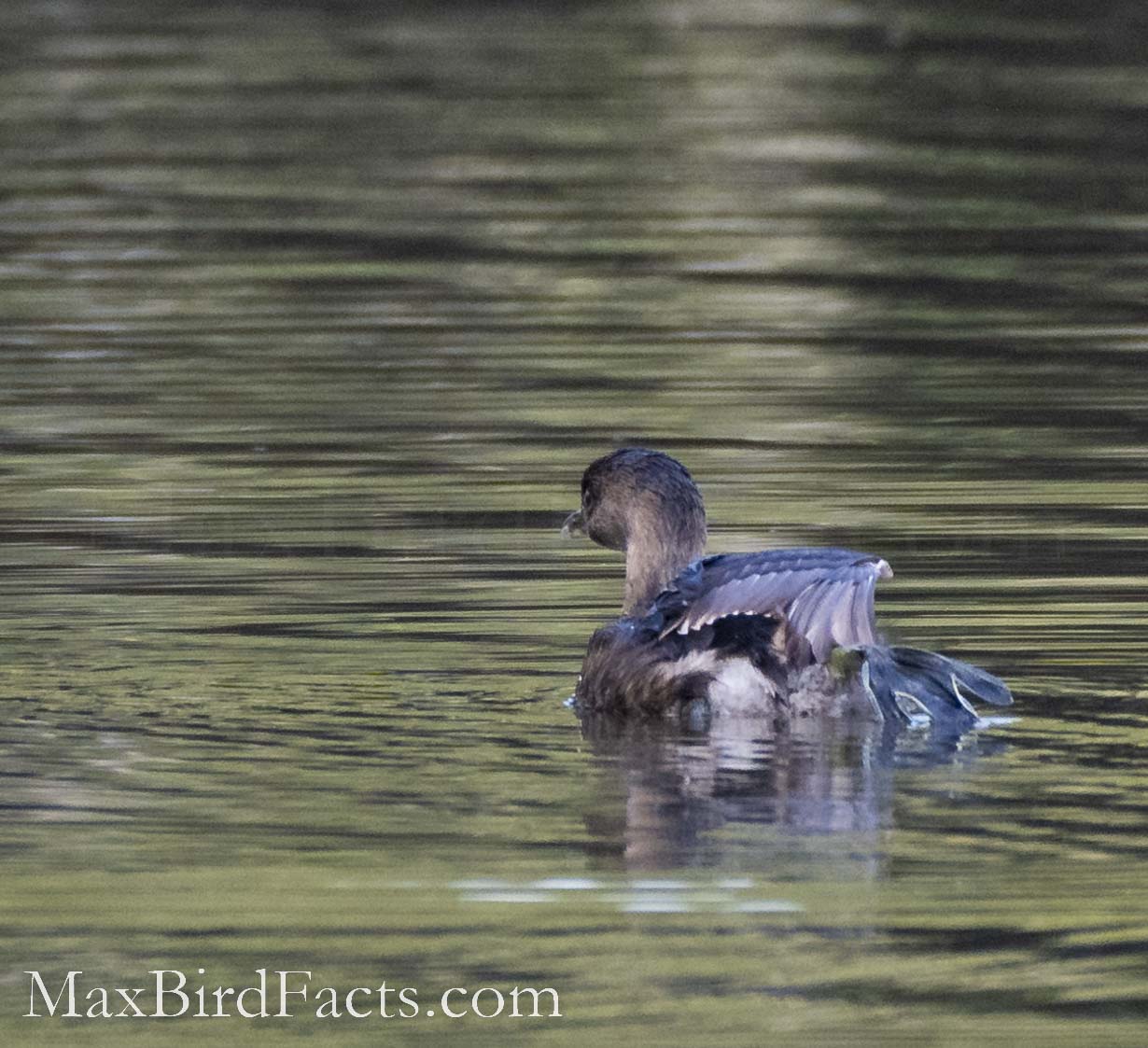
Grebes aren’t the only avians that take advantage of the lobated foot. For example, Coots also have lobbed feet for a superb compromise between swimming and walking.
However, I chose to focus on Grebes rather than Coots because of their overall lifestyle. Grebes are adept fish hunters who swim down their prey readily, a common trait we will see with the other families in this list. Further, I would consider Grebes to indeed be birds that swim underwater, rather than Coots, who spend most of their time sitting on the surface or just bobbing below the water.
These lobbed feet are the key to these birds’ underwater success and are equally as handy to escape danger. If a Grebe senses a threat, it will flap its wings and run on the water’s surface before taking into the air.
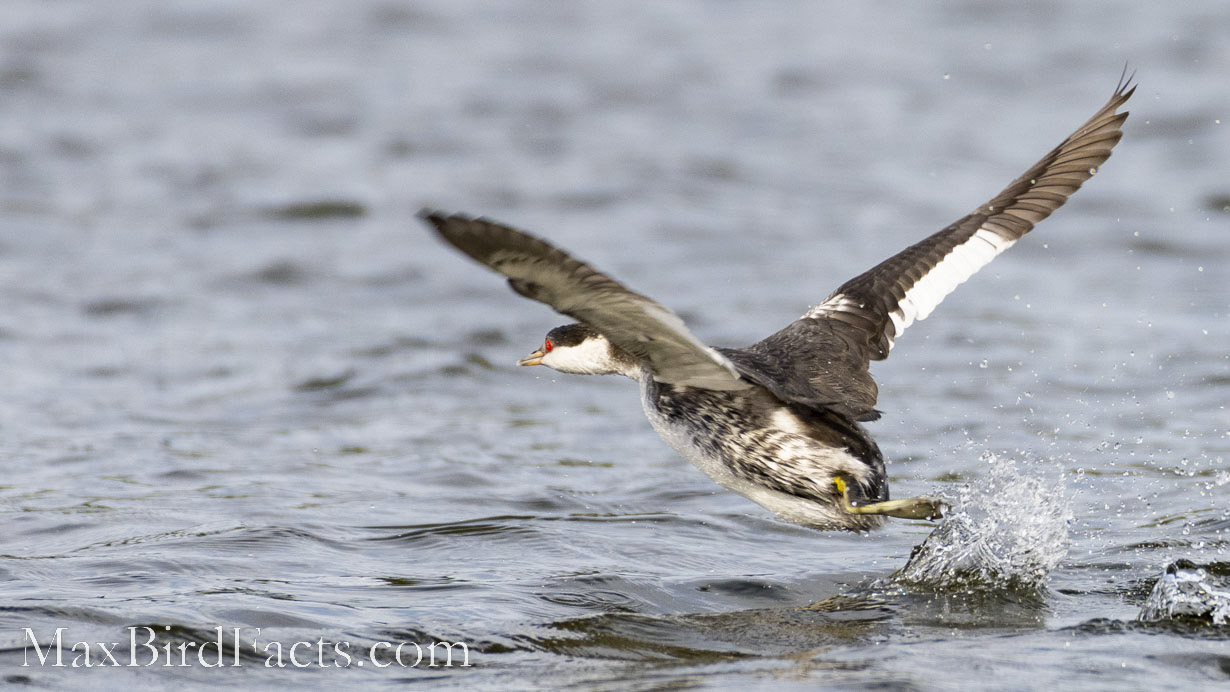
The increased surface area the Grebe’s lobbed feet provide allows them to have a snappy take-off speed, especially for the size of their wings.
Mergansers (Anatidae)
Like the Grebes above, Mergansers are often overlooked compared to their cousins within Anatidae. Yet, these diving ducks exemplify the piscivorous lifestyle more accurately than any of their relatives.
Like nearly all other members of the Anatidae family, Mergansers have palmated, or webbed, feet. We discussed the advantages and disadvantages of this design above for birds that swim underwater. However, they are clearly more advantageous than not since dozens of species still share this webbed-footed trait.
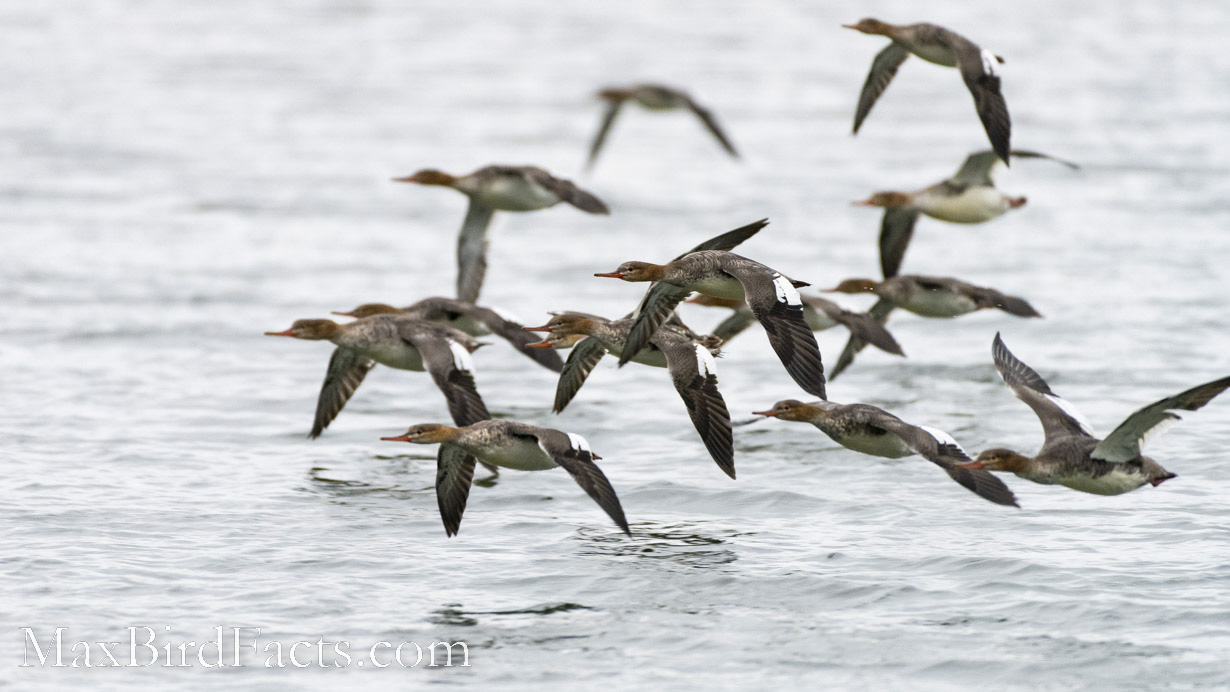
Mergansers are odd-looking ducks; they don’t share the broad, flattened duckbill common among their relatives. However, their bill is perfectly adapted to capturing and holding onto slippery fish.
Their long, slender beaks almost appear to have teeth! However, these are not genuine teeth made of dentin and enamel, as we see in mammals. Instead, these protrusions from the jaws are part of the keratinous sheath that makes up the exterior of the beak.
This toothed appearance has even earned Mergansers the nickname sawbills. These “teeth” are the key to the Mergansers’ success in hunting fish, and they weren’t the first avian to have them.
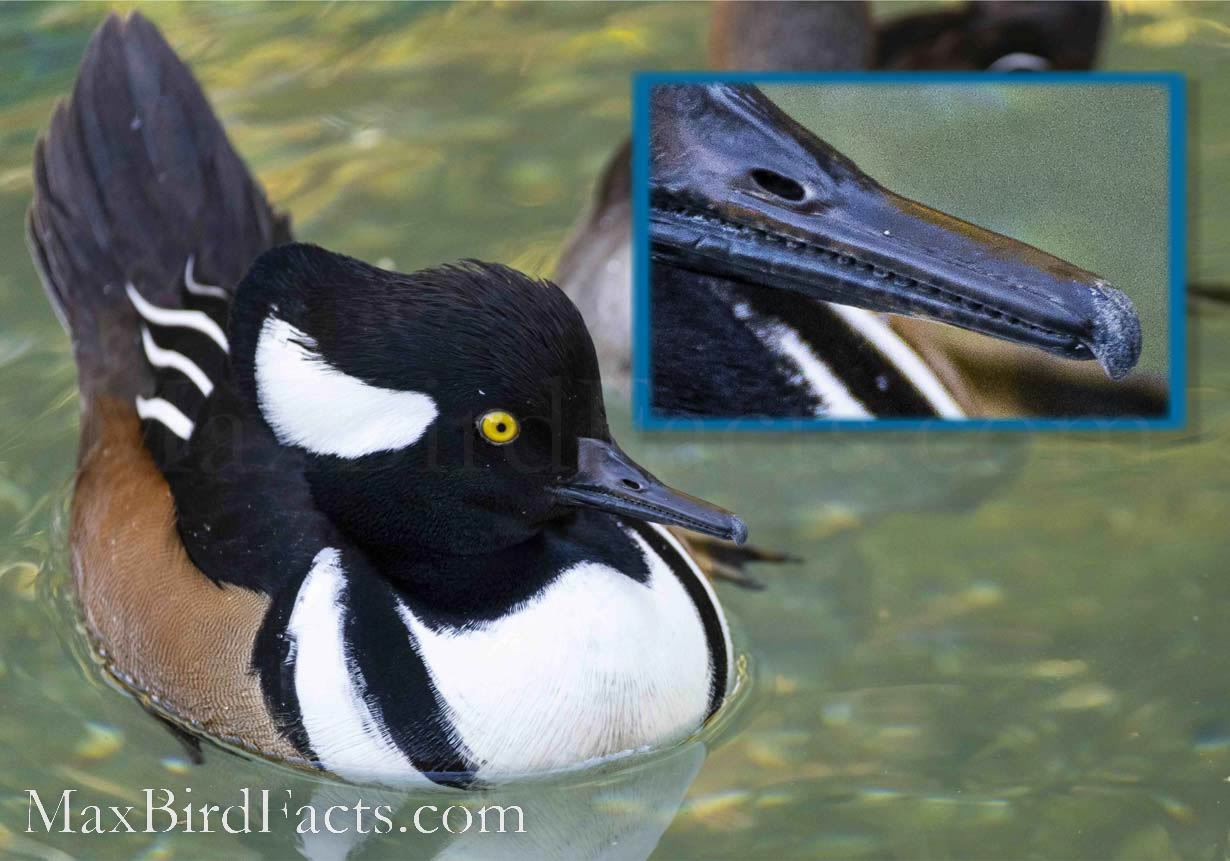
An ancient bird, Hesperornis, thrived alongside the dinosaurs during the Late Cretaceous period. These early flightless birds swam in the ancient seas, chasing down fish, and had true teeth made of dentin and enamel, running along the entire length of their mandible (lower jaw/beak) and on the rear half of their maxilla (upper jaw/beak).
Paleontologists are still unsure why the front half of the maxilla lacks dentition. However, the very tip of the mandible also lacks teeth and shows evidence of being covered in a keratinous sheath, like modern bird beaks. I suspect that this would mean the toothless portion of the upper jaw was also shrouded in keratin, allowing Hesperornis fine point precision with its beak tip while retaining the ability to pin fish against the upper jaw utilizing the teeth on the lower.
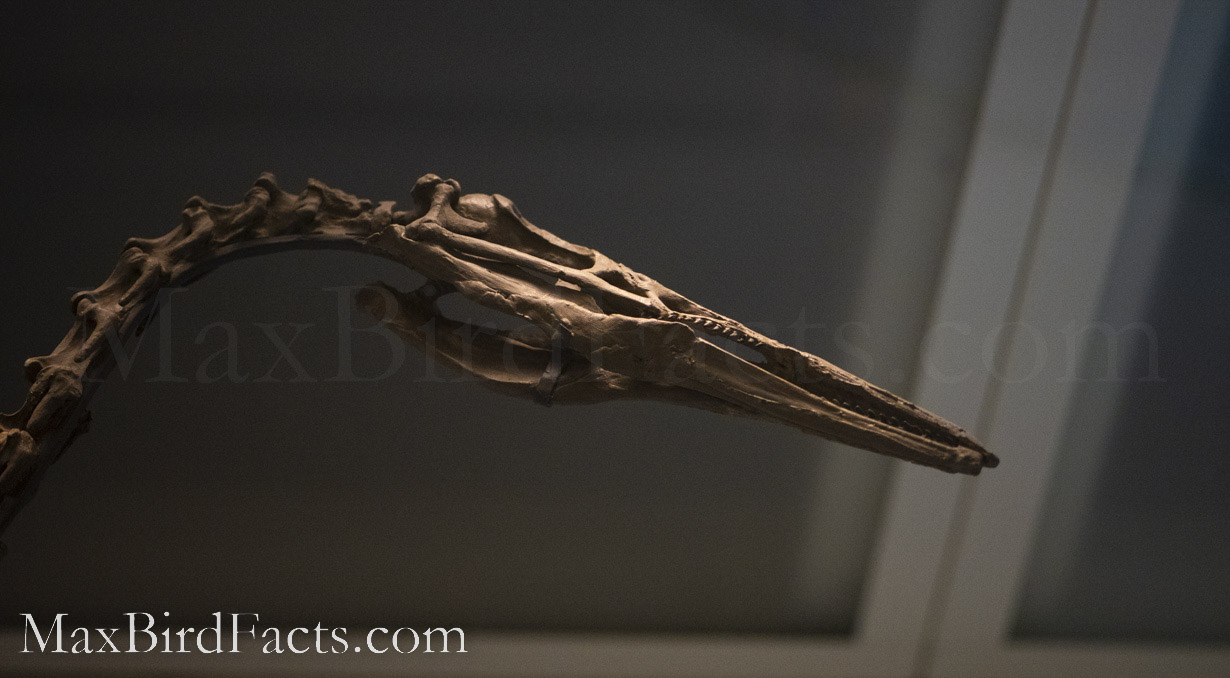
I bring up this unrelated, extinct species because it shares a trait that obviously worked for a handful of avian species we’ve found in the fossil record. However, natural selection eventually selected against the weight these teeth created in the bird’s beak. This forward mass would have moved the bird’s center of gravity forward, making them less maneuverable and clumsy flyers.
However, the blueprint of these serrated tooth-like structures still lives on millions of years later in our Mergansers, still swimming down fish with their palmated feet just like their prehistoric cousins did alongside Mosasaurs and Archelon.
Cormorants (Phalacrocoracidae)
Growing up in Florida, the Double-crested Cormorant (Nannopterum auritum) is a ubiquitous sight. These semiaquatic avians are just as comfortable swimming in the invariant temperatures of spring-fed rivers as they are bobbing in the salty waves of the Atlantic Ocean or Gulf of Mexico.
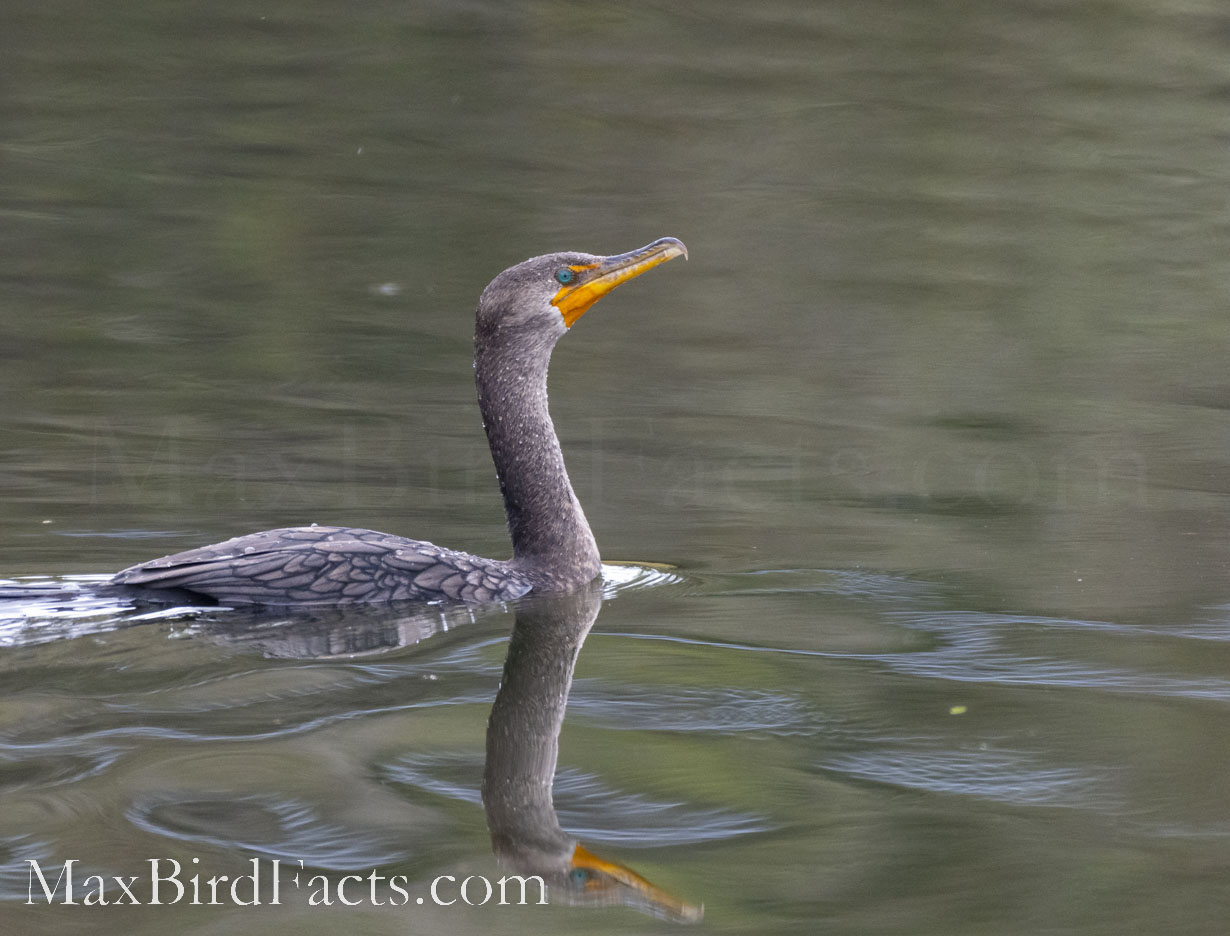
Members of the Suliformes family, Cormorants are very specially adapted to chasing down fish underwater, but in a very perplexing manner. Unlike the other birds we’ve discussed so far, Cormorants aren’t just birds that swim underwater using their feet; they fly underwater with their wings.
Like their cousin, the Anhinga (Anhinga anhinga), the Cormorant’s feathers are not waterproof. This might sound hopeless for a bird that spends most of its waking time swimming after fish, but nature always has reasons for its selections.
Think of a diver preparing to scuba down to a reef, if you will. One of the most essential pieces of gear they have, besides their oxygen supply and mask, is their dive belt. This belt acts as a counterweight to the diver, allowing them to become neutrally buoyant underwater and thus not have to constantly swim down. This is the same reason the Cormorant’s feathers aren’t waterproofed.

As the bird dives, its feathers take on water and gain weight. This weight helps keep the Cormorant neutrally buoyant, preventing it from fighting the pull to the surface. However, this doesn’t mean Cormorants completely lack oiled feathers. These birds still have functional uropygial glands, a special gland near the base of a bird’s tail that is used while preening to clean and waterproof feathers.
The uropygial oil is still essential for Cormorants while preening to keep their feathers clean and parasite free. Another misconception about Cormorants is they cannot fly after swimming since their wet feathers weigh them down. This is false; Cormorants can still fly directly after getting out of the water, though it will take more effort.
If you’d like to read more about this odd aquatic adaptation, you should check out my article How Does an Anhinga Thermoregulate – Warming Up After Swimming (https://maxbirdfacts.com/how-does-an-anhinga-thermoregulate-warming-up-after-swimming/).
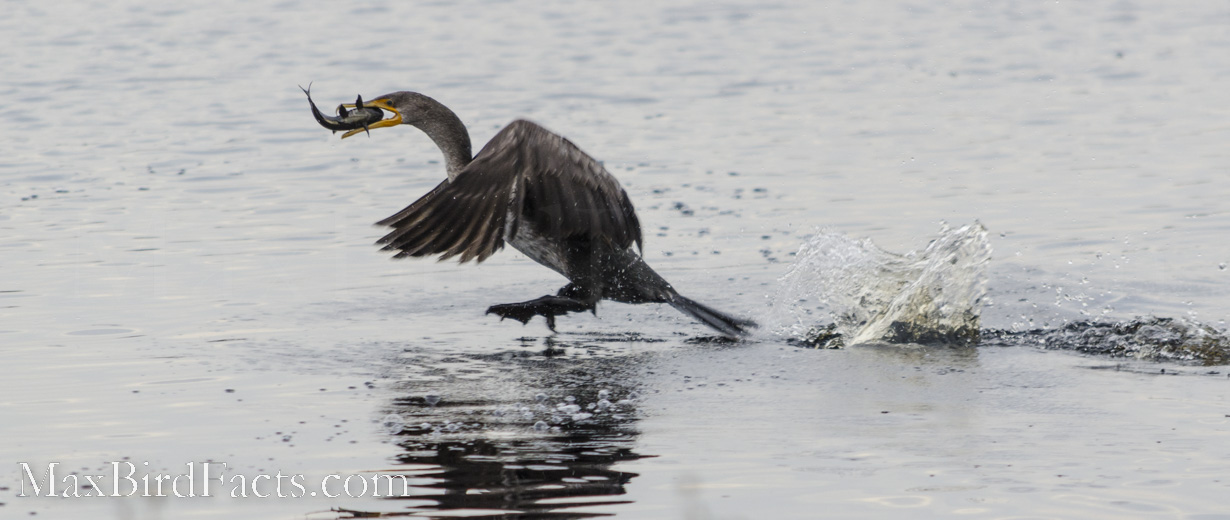
Cormorants share this trait of using their wings to “fly” underwater. However, this method of propulsion typically leads to shorter, more rounded wings, similar to a boat’s paddles. Still, this doesn’t mean Cormorants are poor flyers. On the contrary, I’ve repeatedly seen a Gulp of Cormorants flying overhead at the same altitude as the vultures.
The Cormorant’s adaptations make it truly a master of both the freshwater rivers to the coastal seas where it resides, but our next bird that swims underwater is a veteran of the great North Sea.
Puffins (Alcidae)
The Puffin, or Arctic Penguin as they are sometimes called, is a brilliantly colored and highly skilled example of a bird that swims underwater. These small yet stocky seabirds nest on cliffside burrows, fly nearly four miles to forage, and fly underwater after schools of fish.
Unlike the Cormorants previously, Puffins have fully waterproofed feathers. Puffins have taken the evolutionary trade for neutral buoyancy from wet feathers for a more instantaneous and efficient takeoff from dry waterproofed feathers.
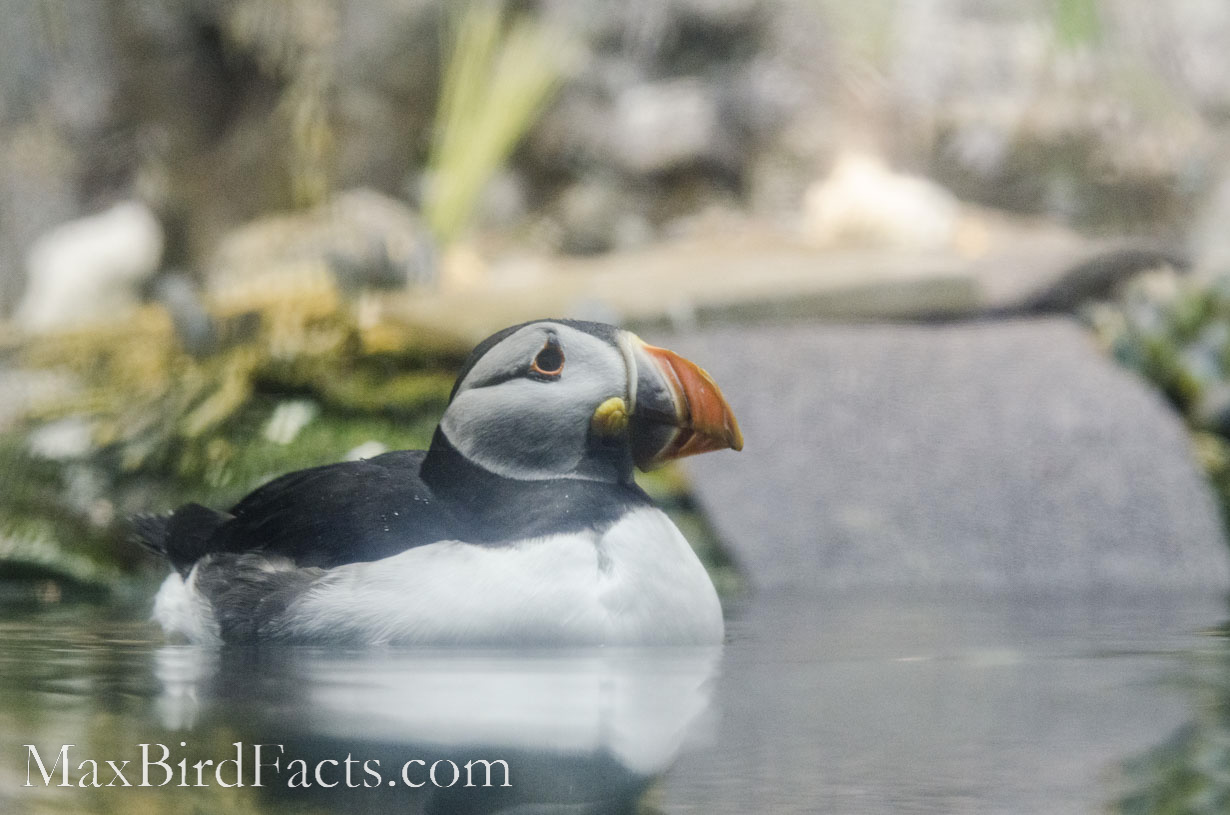
Because their waterproofed feathers trap air underneath, a Puffin must constantly fight the pull toward the water’s surface when chasing down a school of fish. However, this does come with the benefit of trapping warm air around the bird’s body while it swims in near-freezing waters.
Like a diver’s dry suit, the feathers form a protective layer between the frigid waters and the Puffin’s insulative down. This prevents the water from zapping the heat from the bird and allows it to stay below the waves longer.
Because of this bird’s diminutive stature, it is at constant risk of predation. For example, Great Black-backed Gulls (Larus marinus) wait for Puffins to fly back to its burrow with a beak full of fish, where they swoop down and steal the smaller bird’s meal. Additionally, if an Orca (Orcinus orca) sees a Puffin bobbing on the surface from below, it could make an effortless snack.
To fight these predators, Puffins utilize countershading. Countershading is camouflage where the animal is dark above and light below. This camouflage is vital when the Puffin is out foraging. Their black backs blend in perfectly with the dark waters when viewed from above. And their white bellies melt into the sky when viewed underwater.
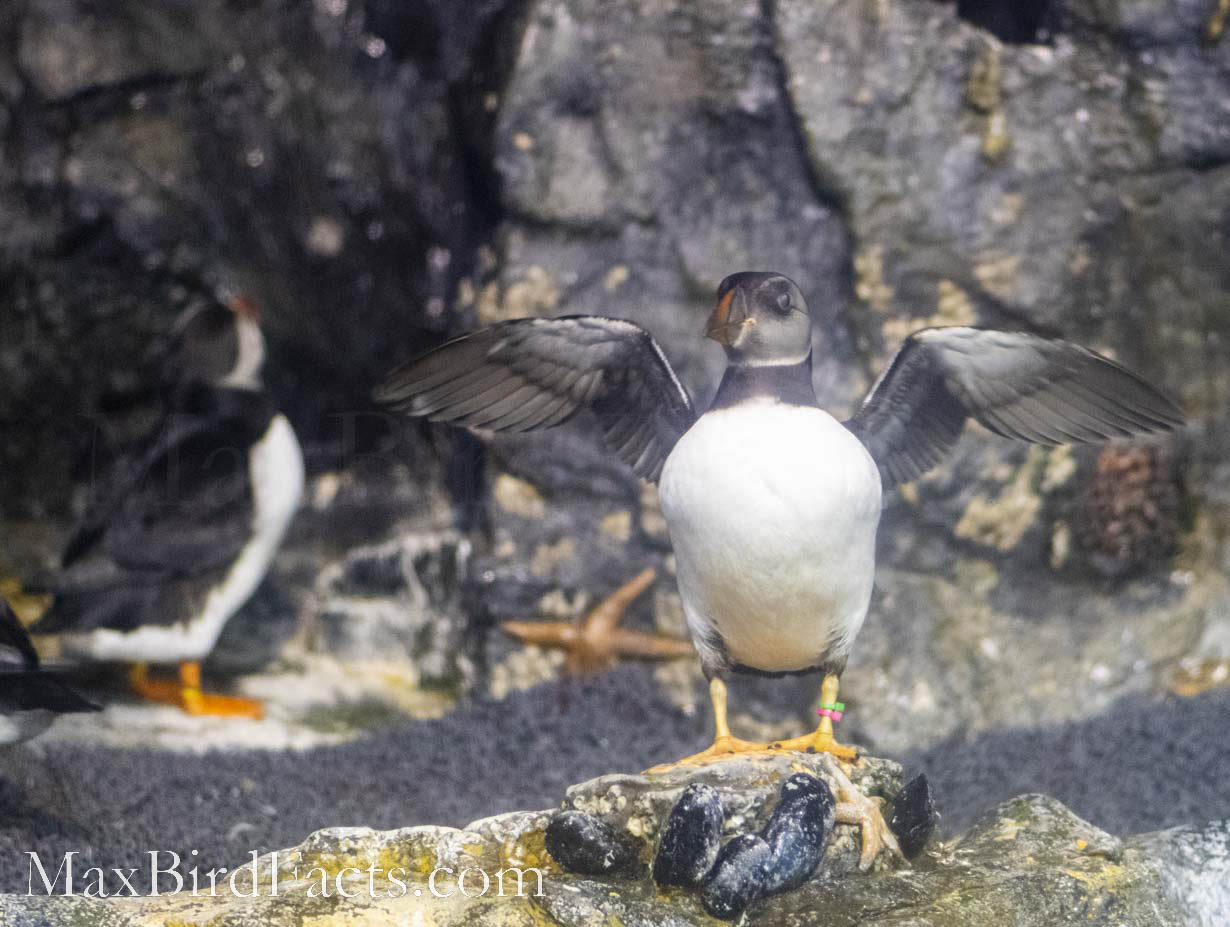
This little bird’s other secret weapon against predators is its high-speed flight. Short, sharp wings and powerful pectoral muscles power these small birds at mind-blowing speeds. Their wing shape is a perfect hybrid of their needs to fly underwater and to race through the sky.
Puffins flight clocks in at 55 miles per hour; compare this to the average speed of gulls being just under 30 miles per hour, and these orange-footed bullets can easily outrun their pursuers. Their speedy flight isn’t just valuable for a dogfight; these birds need to get out of the water and away from aquatic predators as quickly as possible.
As well adapted as Puffins are to a life at sea, I don’t think anyone can argue the final bird on our list is the king of birds that swim underwater.
Penguins (Spheniscidae)
Penguins are arguably the best know birds that swim underwater, and these avians are the most specialized for a subaquatic lifestyle.
Penguins have gone all in on their aquatic lifestyle, so much so that they ultimately gave up the ability to fly. However, this trade at the cost of their flight came with the best aquatic mobility of any avian species.
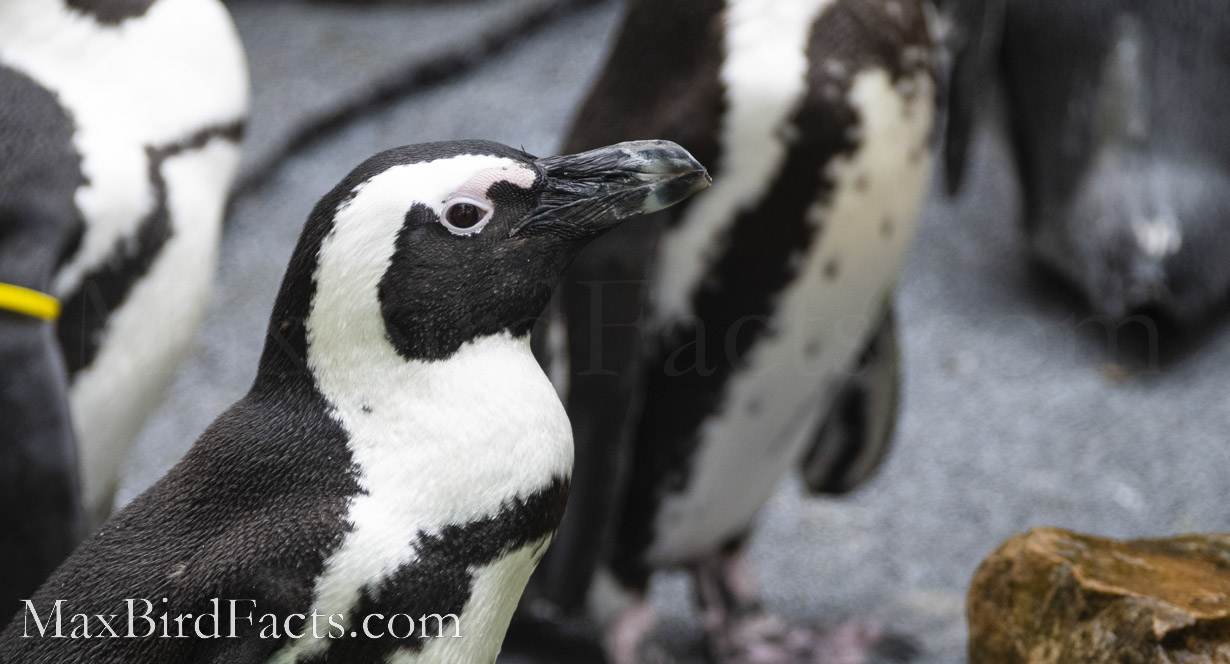
There is actually a surprising amount of confusion about whether Penguins are mammals. The answer, obviously, is no Penguins are birds, not mammals. However, I’ll go through this in another article coming soon.
Regardless, some of the adaptations Penguins have experienced make this confusion somewhat understandable. For instance, Penguins have a layer of blubber that is typically reserved for mammals. However, this thick layer of fat is vital to the birds’ survival through the -50°F Antarctic winter nights.
Their cold weather adaptations don’t stop there. Penguins have heavily modified feathers covering their body that are perfectly duel-purposed for waterproofing and insulation.
The Penguin’s inner layer of feathers is some of the most efficient down in the bird world. These downy feathers form a loose network of air pockets that hold and keep the bird’s body temperature a warm 101°F while swimming in 28°F water.
Keeping this warmth wouldn’t be possible if it wasn’t for the Penguin’s outer layer of exceptionally tightly fitted and heavily oiled feathers to repel water. This oily shell of protection also aids these flightless birds in being more hydrodynamic, turning them into feathery torpedoes.
To read more about Penguin feathers and their extraordinary adaptations, you should check out my article Do Penguins Have Feathers – How to Stay Warm in Antarctic Waters Only Using Feathers (https://maxbirdfacts.com/the-role-of-insulation-waterproofing-do-penguins-have-feathers/).
Natural selection has made the Penguin’s body the perfect shape for cutting through the water after racing fish. The bird’s sharp bill tapers perfectly into a round head, then enlarges around the ribs before tapering back down to the tail.
This body shape is known as fusiform, or wide in the middle and tapered at both ends. Penguins use their fusiform body to slice through the water without making much drag or vortexes while swimming over five miles per hour.
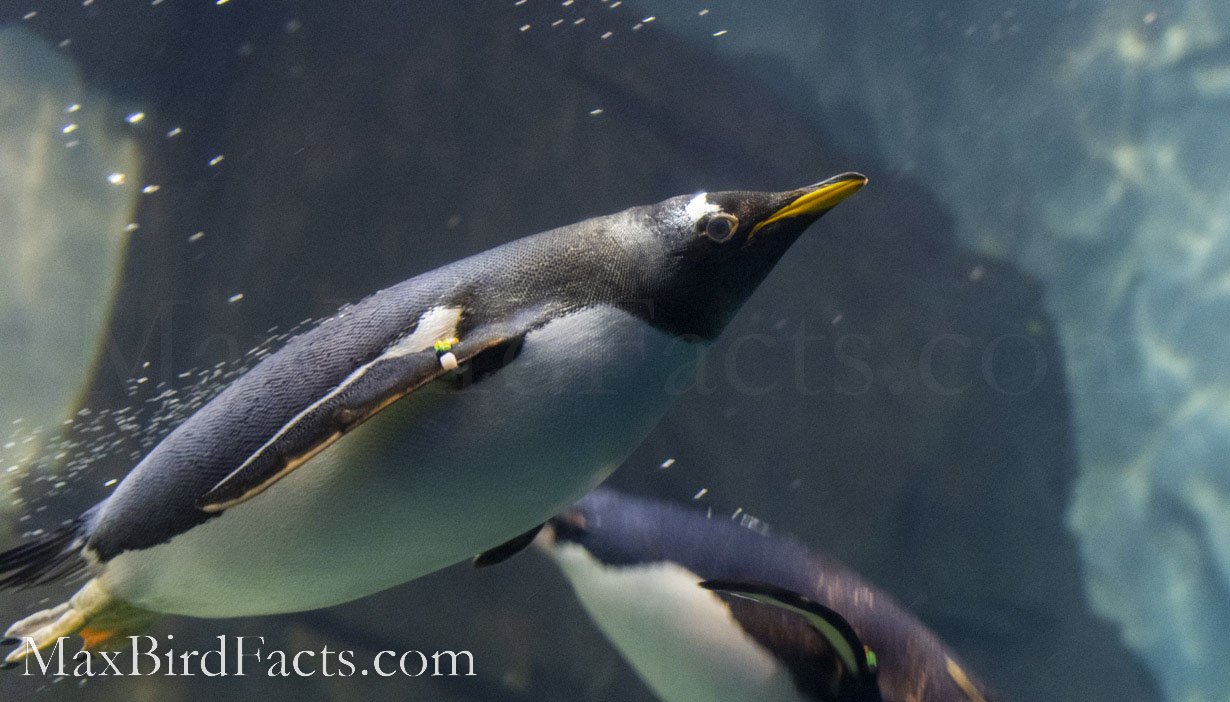
The final adaptation we’ll talk about with Penguins is their wings. Unlike other flightless birds, Penguins have retained a significant function for their wings.
Ostriches (Struthio camelus) and Emus (Dromaius novaehollandiae) retain their forelimbs as vestigial growths. Yes, these can and are used in courtship displays, to intimidate potential threats, and for balance when running at high speed. However, their overall importance to the bird is nothing compared to how the Penguin uses their flightless wings.
Since the Penguin lacks land predators and staying wet in Antarctica’s freezing wind and water would spell instant death, these birds seized their opportunity. As a result of millions of years of natural selection, the Penguin’s wings have flattened into perfect flippers.
The resistance of the water made it necessary for the bones to become dense and reinforced. Unlike most birds, whose arm bones are thin and light, Penguin wing bones are flatted and heavy.
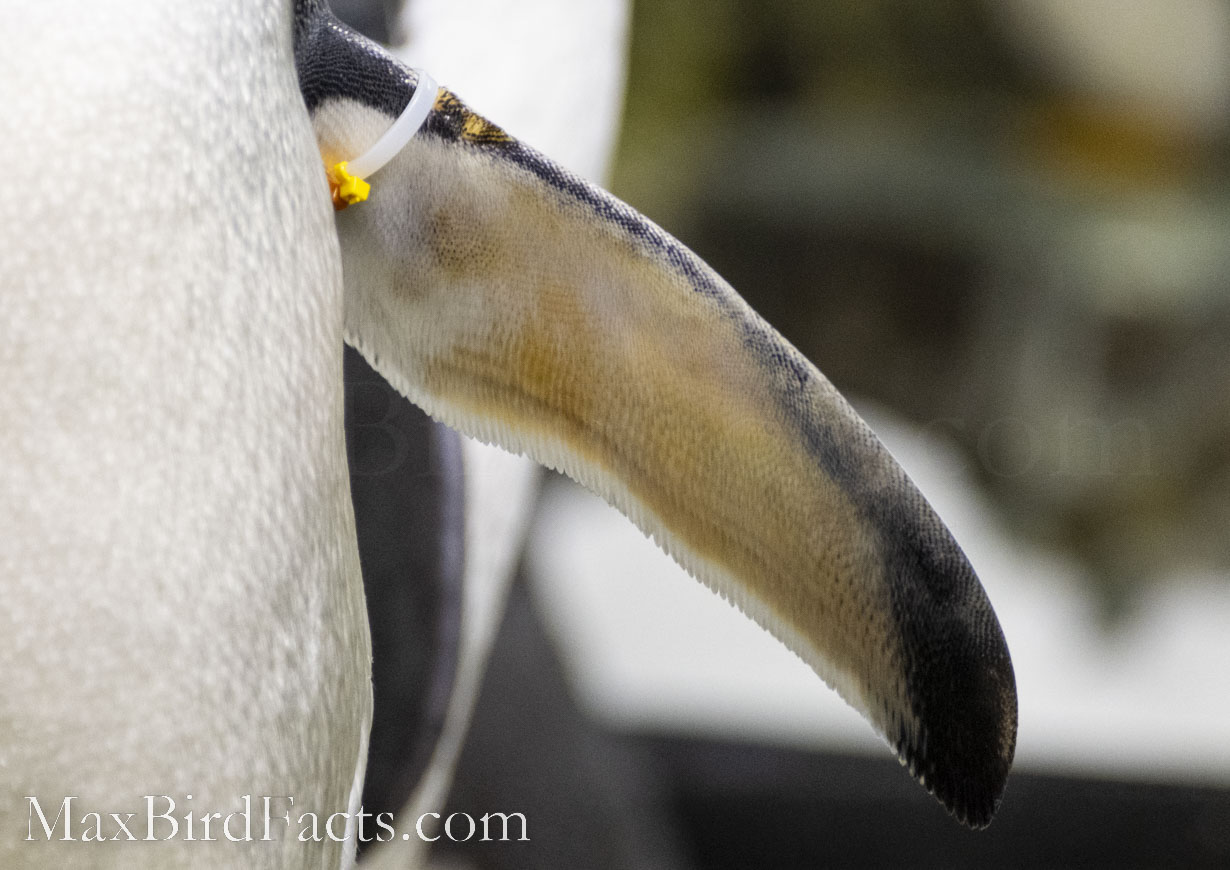
To put this into perspective, a Gentoo Penguin weighs 14 pounds, whereas a similarly sized Common Raven weighs only 2.5 pounds. Because Penguins don’t have to worry about flight, the more weight they add on, the more neutrally buoyant they are.
All this extra weight came with a massive reward: Penguins got around the neutral buoyancy issue Puffins deal with through their thick, heavy bones and layers of blubber.
Without the force of air pulling them to the water’s surface, Penguins can spend less energy chasing down their prey. Match this with their oily, perfectly fusiform-shaped body and mighty oar-like wings, and you get the most fearsome aquatic avian predator that has ever swam the seas.
Now We Know 5 Birds That Swim Underwater
Now we know of five families of birds that swim underwater: Grebes (Podicipedidae), Mergansers (Anatidae), Cormorants (Phalacrocoracidae), Puffins (Alcidae), and Penguins (Spheniscidae).
Each of these families has something that makes them standout: the Grebe’s lobated feet, the Merganser’s serrated bill, the Cormorant’s non-waterproof feathers, the Puffin’s incredible speed and countershading, and the myriad of adaptations Penguins have undergone to become the undisputed pundit of aquatic avifauna.
Hopefully, some of these ideas and features are new to you, like the Grebe’s lobated feet or the Penguin’s fusiform body shape. Regardless, I hope you keep an eye out for some of these features on your next outing, and maybe you’ll find something you’ve never noticed before.
I really hope you enjoyed reading this article as much as I did writing it. If you have ideas or suggestions for topics you would like me to write about in the future, feel free to leave a comment below or shoot me an email!
Get Outside & Happy Birding,
Max
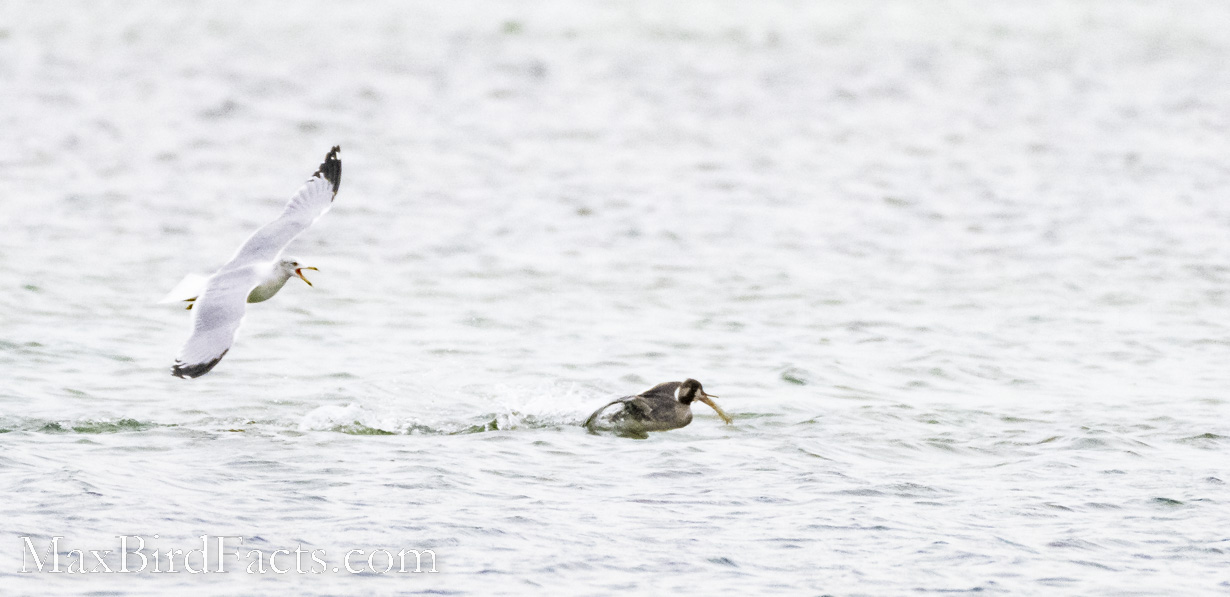
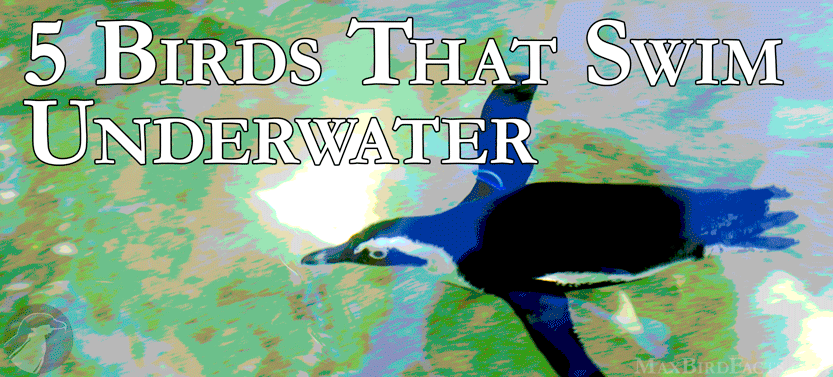
Excellent article! I once encountered a deceased coot, which gave me my first good look at the lobbed foot. The advantages of having lobbed vs webbed foot had not occurred to me. I learned a lot from this article!
When I was young I thought, if I could be any animal, I would be a puffin. To be able to swim like they do, walk on land and also fly, I believed would be the best way to experience the world.
That’s so cool! And I had the exact same thought about Cormorants being the best because they can swim, fly, and walk all pretty well, but I would have to agree Puffins do all of this better. I’m so glad you enjoyed my article, Michele! Thank you so much for your comment!
Excellent article! I encountered a deceased coot once, which have me my first good look at the lobbed foot. The advantages of having lobbed vs webbed foot had not occurred to me. I learned a lot from this article!
When I was young I thought, if I could be any animal, I would be a puffin. To be able to swim like they do, walk on land and also fly, I believed would be the best way to experience the world.
Pingback: Are Penguins Mammals – Of Course NOT, Penguins Are Birds! – Welcome to MaxBirdFacts.com!!!
Awww that Cormorant eating that cat fish is so cute